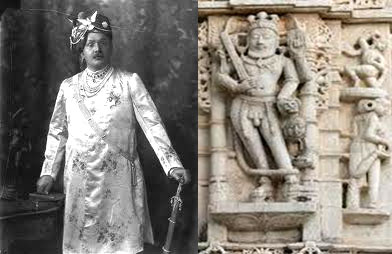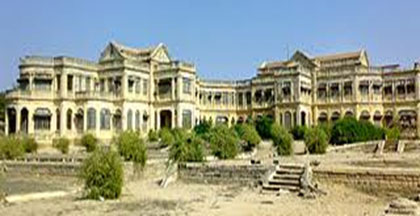Part of Fox History Channel - My city My History Competition

Jamnagar is one of the ancient cities of Saurastra. King Jam Raval founded Jamnagar in 1540 AD on the bank of two rivers- Nagmati and Rangmati. About 22 Jam kings ruled over Jamnagar before India became independent. In AD 1591, Jamnagar was affected by Mughal army of Emperor Akbar. Rajput army of Jamnagar fought very bravely but did not win. Jamnagar was also ruled by Mohmedans for nine years from 1664, at that time it was called Islam Nagar. That the Divan Meraman built the fort surrounding the city in 1788 AD and put four main gates in it. King Jam Ranwal second ruled from 1820 to 1852. He built the beautiful wall of City Lake and also constructed Lakhota palace and Bhujia Kotha. There were great persons like famous Vaidya Zandu Bhatt, well known musician Adityarami, Astrologer Taka Joshi, Sanskrit Scholar Keshvji Shastri during the reign of Vibha Jam, 17th king. There were seven schools of Sankrit language. Therefore, Jamnagar was called ‘Choti Kashi’. The next king Jam Ranjit was great cricketer; he was the only Indian who played in British team. He constructed two new roads. The modern Jamnagar was called “Paris of Saurashtra”. Jamnagar is well known as religious and historical place. Cemetery of Jamnagar is very famous. The city Lake Ranmal Talav is very beautiful, it is surrounded by gardens. There is well known temple of Bala Hanuman near the lake. From 47 years continues Ram chanting is going on day and night and it also holds the place in Guinness Book of world records. Jamnagar is famous for its Brass products, Bandhani, Kanku, Kajal, Nut- cracker etc. Jamnagar is also called Chhoti Kashi, Paris of Saurashtra, Liverpool of Saurashtra, city of temples and Kasi of Cricketers.
History of Jamnagar
By - Miraj Raval
VII, Stya Sai School
Jamnagar, Gujarat

Navanagar is situated in the western part of India, well known as Jamnagar. Darbargarh is situated right in the centre of the city where Jam Raval had placed foundation stones of Jamnagar city. It is the oldest building of the city. It is believed that development of the city must have begun with the construction of Darbargarh. The story goes like this, Jam Raval and his companions tied their horses and rested for a while on some higher plain which was between the two rivers Nagmati and Rangmati. They well in love with the place, so foundation of Darbargarh wall was laid there. It looked different at that time. At present there is one section of the building known as Tilamedi, which belongs to that time. The coronation ceremony of each king of Jamnagar used to take place in Tilamedi. Even today, wooden throne of Jam Raval, his sword, spear, dagger are preserved in Tilamedi. Darbargarh was in the form of rectangular fort. it was surrounded by walls and there were gates in each direction to enter in it. Ashapura Mataji’s temple is also there in Darbargarh. Jam Raval also build a temple as his personal temple inside the Darbargarh. Inside, we see famous paintings of famous Bhuchar Mori war and other paintings on the wall. We can see map of Jamnagar city on the ceiling of one hall, it is believed that this map was engraved in the year 1912. Intricate carvings are seen in the balconies of Darbargarh’s front part. Courts were started afterwards. Above the second floor, court records are preserved. The Darbargarh pre-dated the coming of the British and thus all three floors of Darbargarh contains architecture, art and artifacts, dating back several years with less influence from Europe. The Darbargarh of Jamnagar is one of the most magical yet least widely known historic complexes in all of India.
Darbargarh Palace
By - Niruti Khanna
Vii, Shree Satya Sai Vidhyalaya
Jamnagar, Gujarat